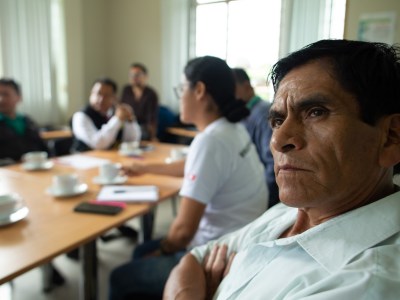Why do some participatory processes help level the playing field in conservation and development projects while others reinforce unequal power relationships among participants?
Complex problems, such as those related to land use and climate change, involve many people —government officials, non-profit conservation groups, private enterprises, local communities and funders.
At first glance, bringing those stakeholders together to make decisions may seem like the most democratic and equitable way to reach agreements and work toward common goals.
But it’s not that easy, say two scientists with the Center for International Forestry Research (CIFOR).
The key to understanding those processes — and making them work better in the future — lies in lessons from the past, according to a new report.
Their review of articles about sub-national, multi-stakeholder forums established to address challenges related to land-use change found that the success of participatory processes depends on how well they are adapted to local circumstances.
“We all know that ‘context matters’,” said Anne Larson, CIFOR principal scientist and leader of the Equity, Gender and Tenure team. “The question that remains is how to address it. Context is often seen as an obstacle or a problem for project implementation because it ‘interferes’ with planning, and yet everything happens in a specific context,” Larson says. “We wanted to know from the review how initiatives can be designed to account for, and adapt to, the specific contexts in which they are implemented.”
Larson and CIFOR researcher Juan Pablo Sarmiento Barletti, working in collaboration with Christopher Hewlett of the University of Maryland and Deborah Delgado of the Pontifical Catholic University of Peru, found that the standard systematic review method would only indicate whether an initiative was successful, and not provide information about the local context that could explain why a process succeeded or failed.
The team opted instead for the realist synthesis review method, which examines in greater depth not only how a given process worked, but why it produced the results it did.
Following a strict research protocol, the researchers narrowed down 984 articles to 124, which involved sub-national multi-stakeholder forums with at least one governmental and one non-governmental actor. They winnowed that group down further to 16 articles describing 19 case studies that fit strict criteria regarding the depth of the information they provided about the context of the cases.
The in-depth study analyzed common characteristics in those 19 cases, which corresponded to a dozen countries as diverse as India, Indonesia, Cambodia, Brazil, Cameroon, Mexico, the United States and Canada.
Read More

